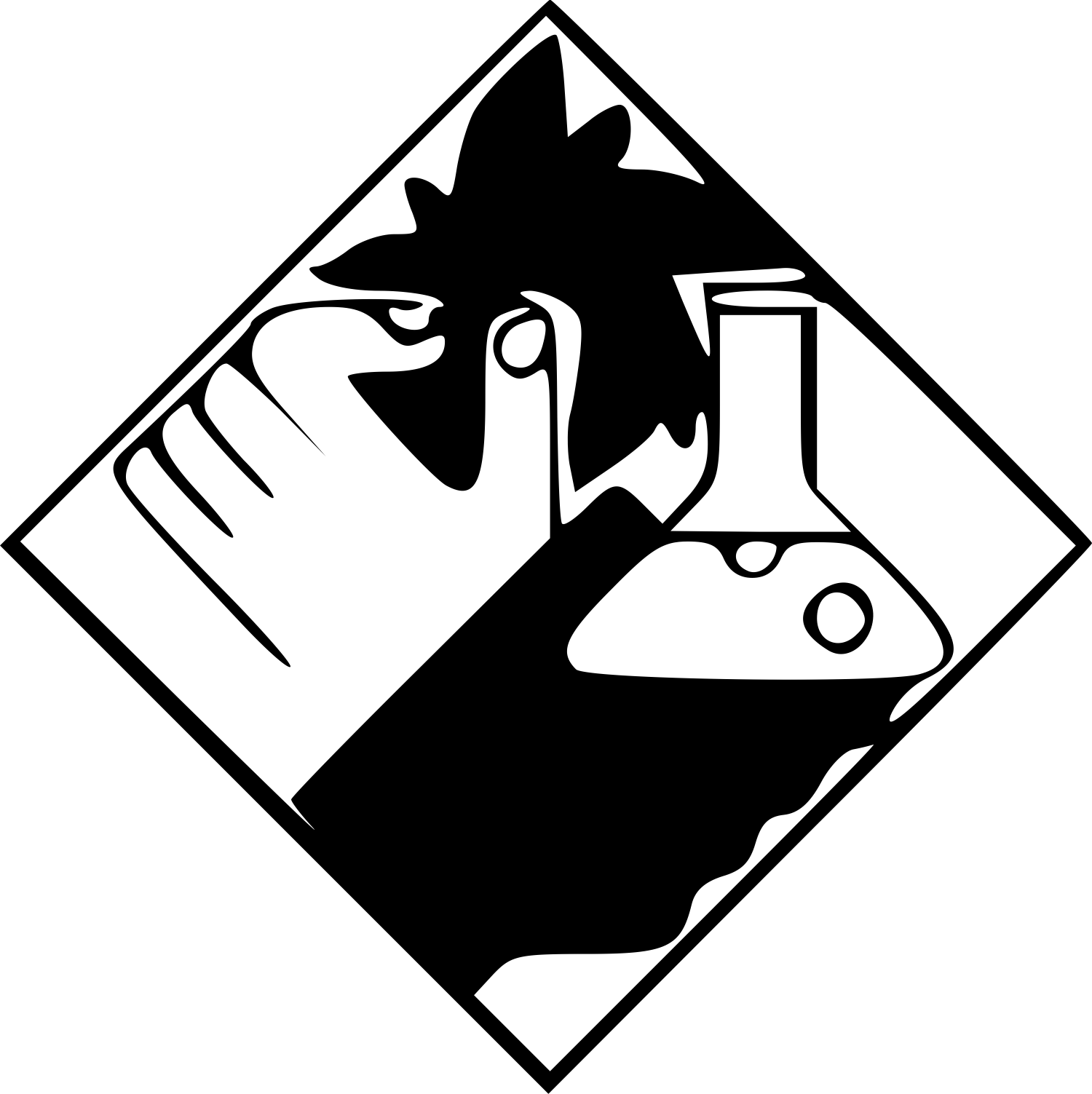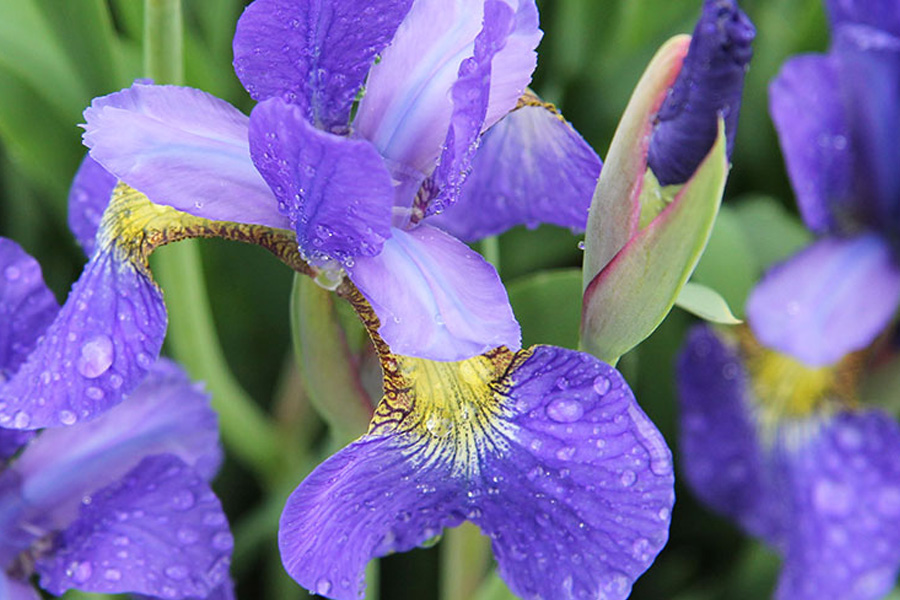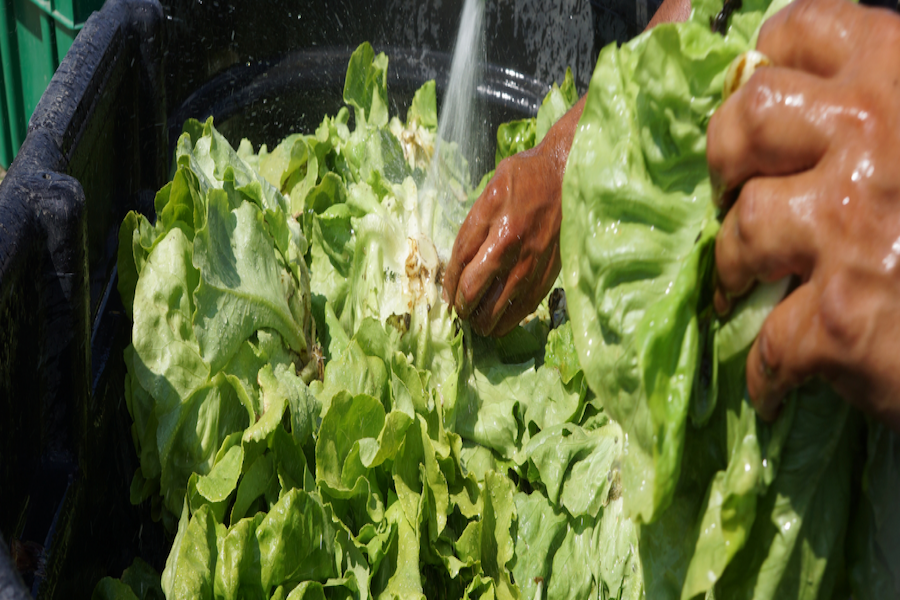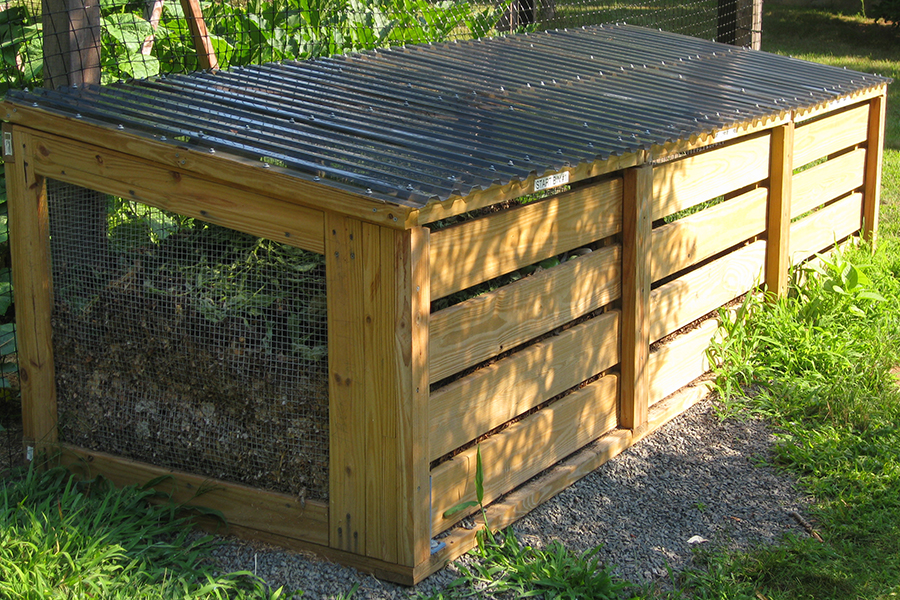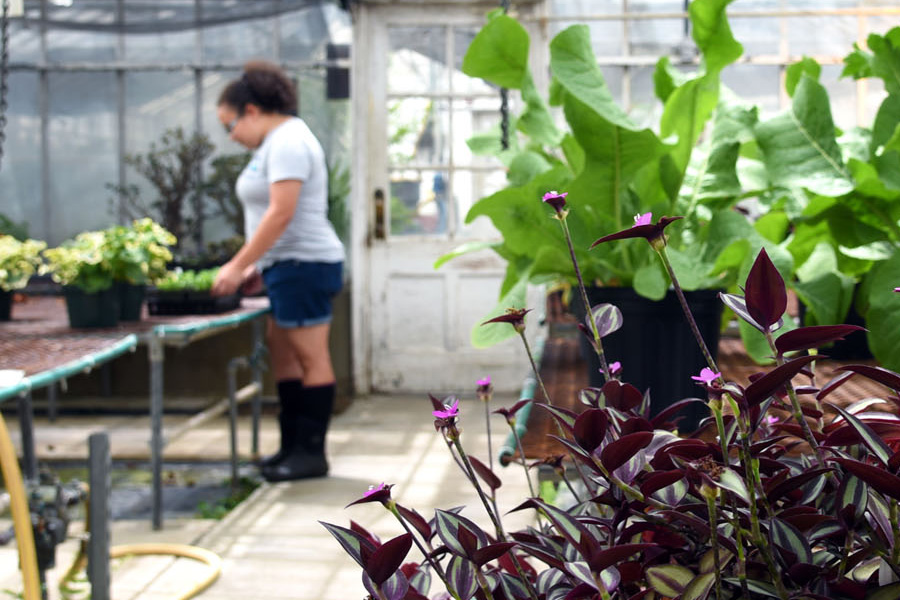
The UConn Home & Garden Education Center (HGEC) is a horticultural informational resource for the citizens of Connecticut and beyond. The staff at the Center reach nearly 400,000 citizens in outreach efforts each year.
News & Announcements
The UConn Home & Garden Education Center is open 8:00 AM – 4:00 PM Monday – Friday
Send your questions to ladybug@uconn.edu, call us at 877-486-6271, or stop in to the Ratcliffe Hicks Building (Room 004) with your plant questions!
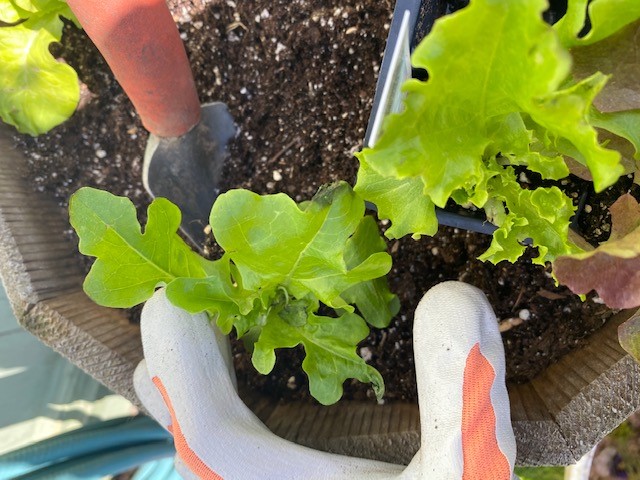
Fact Sheets
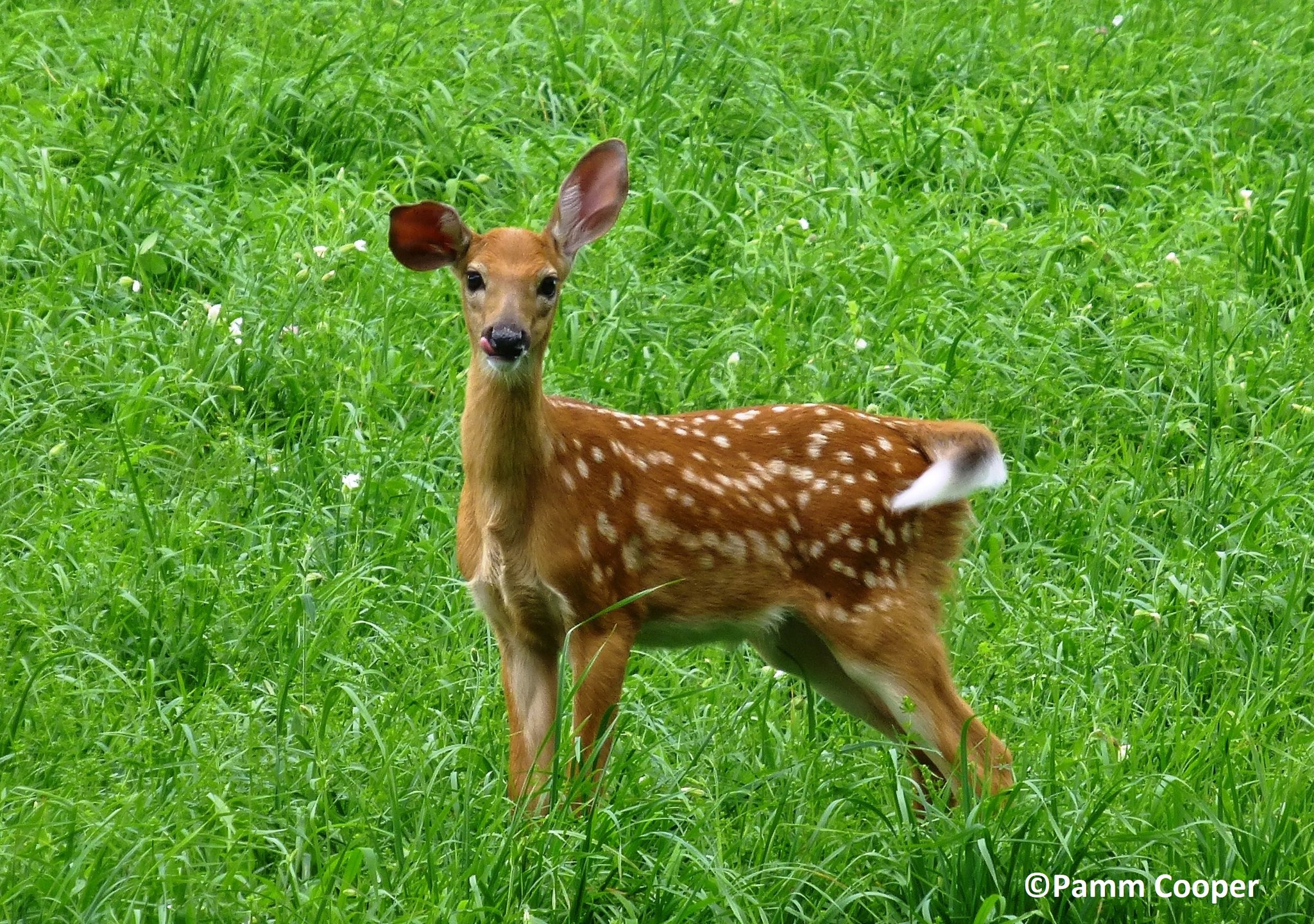
Monthly Spotlight:
Deer Resistant Vegetables & Herbs
Gardening Tips
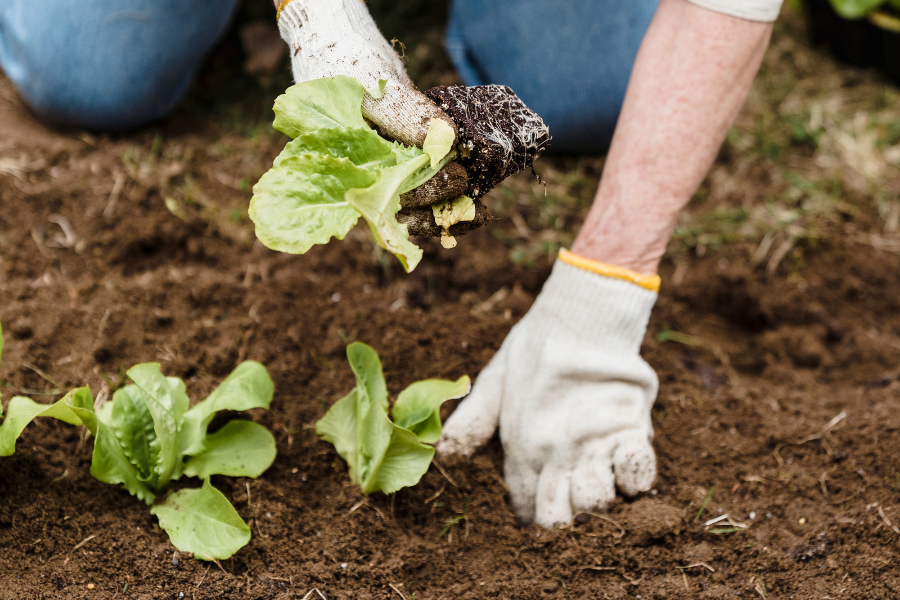
Gardening Tips for May
E-Newsletter

Container Gardening, Insect Habitats an other May News

"Gardening requires lots of water - most of it in the form of perspiration."
-Louise Erickson
Container Gardening

May is a mad dash to get our spaces in shape for outdoor entertaining and vegetable and flower gardening. Container gardens have become a universal tool for gardeners of all types as they can meet all sorts of needs.
• They allow plant lovers in rental spaces to enjoy planting with minimal impact
• They provide great accessibility to gardeners of all ages and abilities
• They allow temporary solutions while larger projects are in progress
• They give gardeners an opportunity to plant where soil is poor or where rocks/tree stumps prevent them from digging into the ground
• They give us an easier opportunity to change our minds! Experiment with color, texture, and style - if you don't like it, change it the next season!
We've seen this method come a long way in the past few years It's being used for ornamental plants and fruit and vegetable plants, alike. Some even mix the two in an effort to bring both productivity and beauty to a small space.
The best thing about it, is that it doesn't take up a lot of space, time, or energy to keep going. And new advances are being made all the time as new "container friendly" varieties are hitting the market for all types of plants.
We have a few suggestions for you if you're considering container gardening this spring:
• Many gardeners refer to the "Thriller/Filler/Spiller" method of design where a central plant is surrounded by plants that will fill in and cascade over the edge of the container.
• Give your plants enough space to perform well in their container. This is incredibly important for vegetables and herbs that will be producing for you!
• Use soilless potting media in your containers.
• Pre-made mixes (sometimes called "recipes") can be found in larger drop-in pots that can be placed into a decorative container when you bring it home! Hanging baskets can be another alternative - just remove the hangers.
• Select an appropriate container. The material and size of the planter you choose should be something you consider. Any plants that need to go in for the winter should be in planters that can be easily moved or carried inside. Additionally, different materials need different maintenance and care from season to season.
Healthy Habitats for Beneficial Insects
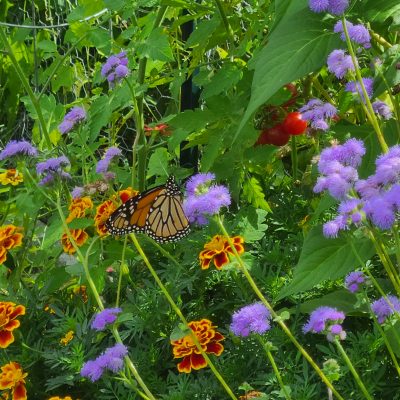
Creating a garden or habitat within your space to support beneficial insects can be the most effective thing you can do if you have the space. Select plants that are known to support the various life stages of insects you hope to encourage in your garden. For example, parsley is a great herb to host swallowtail caterpillars.
A thriving garden will host beneficial insects including pollinators, predators and parasitoids. Additionally, a few "bad" insects in the mix provide a food source for some of these beneficials and ensure you have a healthy balance in your garden ecosystem. Never panic at the first sight of trouble. Investigate further and monitor a problem as it develops. Always use Integrated Pest Management practices when considering treatment for any pest or disease you find in the garden.
Beneficial Insects in the Home Garden
In recent years, the concept of "insect hotels" has been increasing in popularity. It is important to realize that these structures are considered a fantastic tool in a tool box of many things that are needed to preserve these populations of pollinators, parasitoids and predatory beneficial insects. They can be great educational tools or supplemental habitat when absolutely necessary. Native insects are well adapted to finding shelter in gardens and habitats locally created by you, your neighbors, and surrounding areas.
If you choose to host one of these in your garden, be aware that it is not a 'set it and forget it' type of garden decoration. Take all the precautions to ensure that you are maintaining a healthy habitat by cleaning out nesting each year, monitoring for signs of distress, and purchasing sustainable and safe materials for the insects to be using.
Gardening with Climate Change in Mind
The Department of Plant Science & Landscape Architecture at UConn has been spreading the word about gardening in a changing environment.
Dr. Mark Brand has been working to develop cultivars that are equipped to adapt with changing environmental conditions and stressors like drought and heat. His lab also works to improve native shrubs to help with their adaptability in our changing climate as well.
Dawn Pettinelli from the UConn Soil Nutrient Analysis Lab & Home and Garden Education Center joined Catherine Shen & Charlie Nardozzi on Connecticut Public to discuss ecological gardening and strategies for gardening for the environment.
Native Plant Highlight: Pinxsterbloom Azalea

Rhododendron periclymenoides is a native deciduous shrub found in wet woodlands, stream and pond edges and sometimes in open areas where soils are damp. Showy clusters of pink flowers appear in May before leaves expand. This native makes a good addition to a shade garden where it will be out of the afternoon sun. Hummingbirds, butterflies and bees frequently visit the flowers.
Native Butterfly: Red Admiral
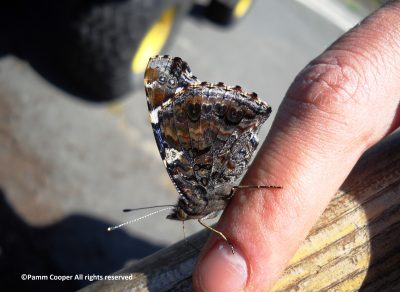
This common native butterfly is one of several migratory species, and one of the first to migrate north in early spring. They can be found in moist areas near woodlands, and they visit garden flowers from spring through late summer. The most common host plant of the caterpillars is stinging nettles, which is one reason most people never see them. When the butterfly folds its wings, it reveals the undersides that resemble a Jackson Pollock painting. Red admiral's often land on people to get salts from sweat.
Native Bird: Mallards
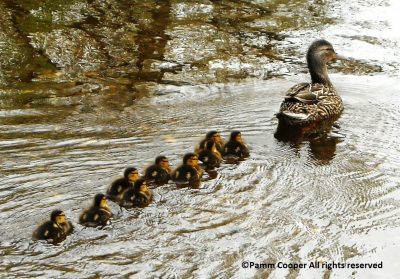
Mallard ducks normally lay 4-14 eggs between March and June and the young are on their own after 8 weeks. A maintenance worker at a golf course stopped traffic so this mallard and her ducklings could safely cross a busy street on their way to a reservoir. The nest was an eighth of a mile away on a grassy pond edge.
Vegetable Gardening Resources
During the growing season, UConn Extension publishes a regular pest alert. Additionally, the New England Vegetable Management Guide offers a lot of information about specific vegetable crops.
While the target audience for these publications is usually commercial growers, home gardeners can learn a lot from these materials including identification and management of common pests in your veggie gardens!
If you ever need confirmation on an ID or have additional questions about what you read in these reports, please do not hesitate to reach out to us at the Home & Garden Education Center! We're happy to help your gardens thrive.
Knowledge to Grow On
Read our Ladybug blogs written weekly:
Upcoming Events and Things to Do
- Visit a farmers market! Many start opening in May and continue throughout the summer.
- Support your local garden club by attending their plant sales/May markets
- Celebrate Mom on Mother's Day! - May 12th
- Shad Derby, May 18th, Windsor, CT
- Sky's the Limit Hiking Challenge - Hosted by CT Parks & CT DEEP. March 22, 2024 - December 6, 2024
- Attend a Memorial Day Celebration, Memorial Day is observed May 27th this year! Most towns in the state host their own parades and activities on the long weekend to honor those who bravely served and sacrificed for our nation.
- Get out and garden! The growing season is finally here!
Educational Opportunities & Workshops
- Roses for New England with Mike & Angelina Chute, May 16th, West Hartford, CT
- Dig Into Gardening: A 3-Day Weekend Workshop May 17th, 18th & 19th, Washington, CT
- Birding at the Bartlett, May 18th, Stamford, CT
- Beginner Tree ID, May 19th, Hampton CT
- CBS and Yale Herbaria Tour, May 25th - Yale Peabody Museum, New Haven CT
May Gardening Tips
- Plant vegetable starts after all danger of frost is gone and the soil is warm. This is usually the last week in May.
- Direct seeding of beans, corn, cucurbits and melons can be done at this time as well.
- Peppers & tomatoes like warm weather!
- Put nets over ripening strawberries to protect them from birds and other wildlife.
- Lily leaf beetles often show up first in spring on leaves of the crown imperial (Fritillaria). Check both sides of the leaves and down inside the center whorl of leaves. Also check the undersides of leaves for tiny orange eggs. The larvae have orange, brown, or greenish yellow bodies that are sometimes hidden under their excrement. Hand-picking the adults and the egg masses is the easiest control method.
- Aphids and lace bugs will appear soon. Spray with water or use a low-toxicity insecticide to control them. Asian lady beetles are a beneficial insect that feed on aphids.
- Remove any tree wraps or guards you placed on young trunks for winter protection.
- Clematis vines like cool roots so apply mulch or plant a low-growing ground cover to shade the ground.
- Use fresh potting soil in your containers as old soil has fewer nutrients and may contain harmful bacteria and fungi.
- As night temperatures moderate into the 60's, move houseplants outdoors. Help them with the transition by putting them outside on warm days and bringing them in on when nights are too cold. Avoid putting them directly into full sun or windy locations.
- Hummingbirds and orioles return to northern states by mid-May. Clean and refill feeders to attract these colorful birds to your backyard or fill hanging baskets with flowers that will attract them such as petunias, salvia, and fuchsia.
- Aerate and moisten the compost pile to speed decomposition.
This Month’s Newsletter Contributors:
Pamm Cooper, Dr. Nick Goltz, Dawn Pettinelli, Marie Woodward, Heather Zidack
Newspaper Articles
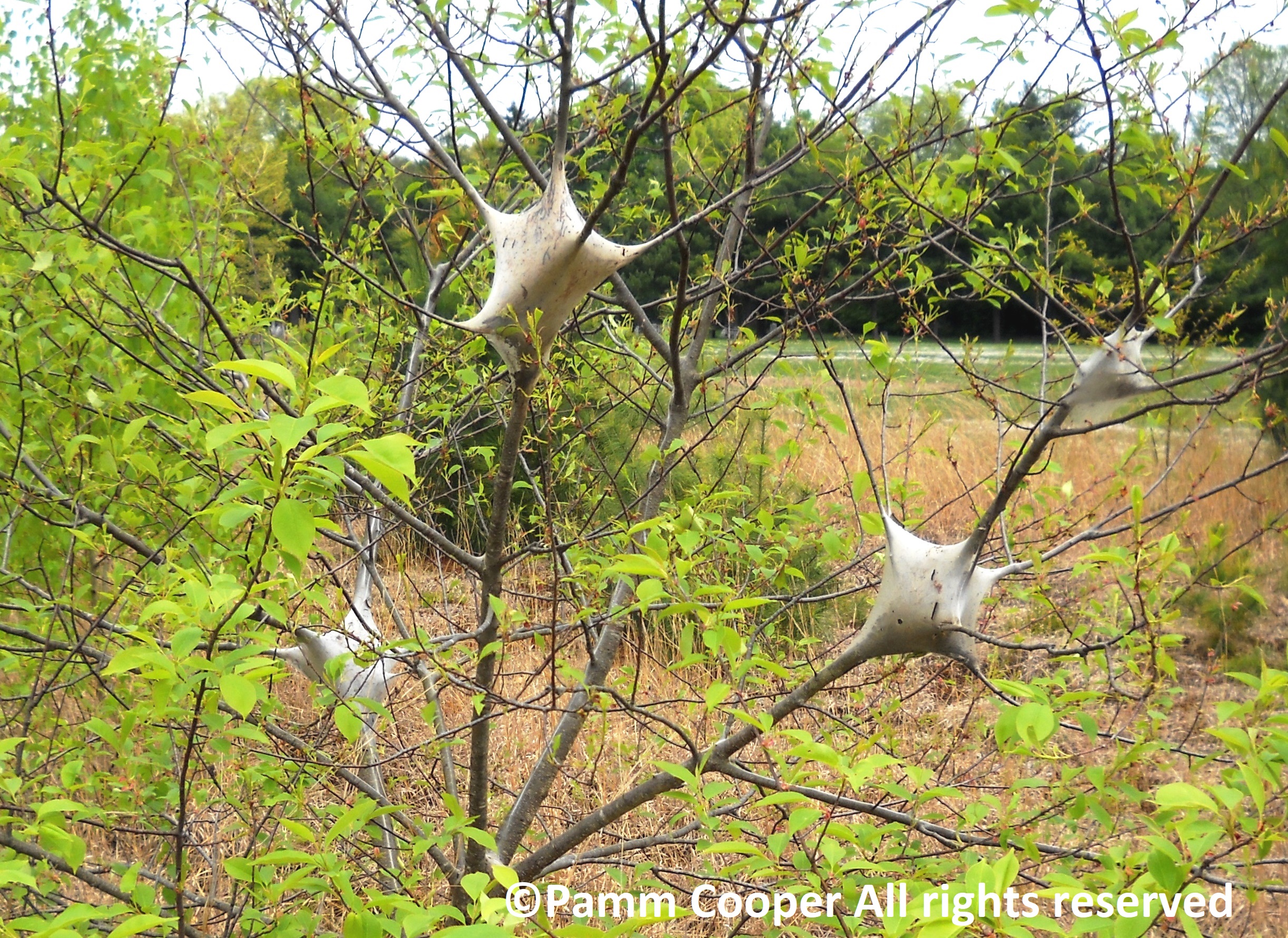
Eastern Tent Caterpillars
By Pamm Cooper, UConn Home & Garden Education Center
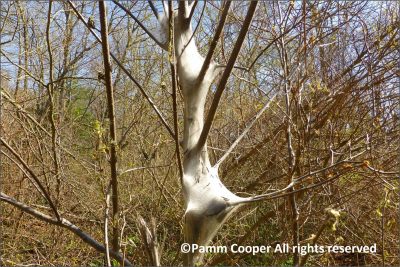
Eastern tent caterpillars, Malacosoma Americanum, are native to North America and are noticed mainly because of the silken tents they build in the forks and crotches of trees in early spring. While most tents are found on black cherries, they can also be found on other trees such as apple and crabapple. They are readily visible since tents are constructed before leaves fully expand. There is only one generation per year.
These caterpillars are hairy and dark when small, and later instars have two yellow lines along the back. A white medial stripe goes along the sides of the body, and this is flanked by two yellow lines. There are blue blotches along its side as well. Bottom hairs on the body are rusty brown. Forest tent caterpillars are also hairy, but they do not make tents, and their bodies
are blue with white dots on the back. Handling should be done with gloves on as some people may have sensitivity to the hairs.
Egg masses are black, laid on small branches of host trees the previous year, and the egg mass rings around the branch. Sometimes they are mistaken for small black knot galls. 150-300 eggs may be in each egg mass. Caterpillars typically hatch as black cherry leaves begin to expand the next spring. Caterpillars feed on leaves and buds and rest communally by day in the nests they construct from silk.
While they can almost defoliate small trees, these caterpillars usually have completed their feeding stage in time for the trees to put out new leaves by early summer. The more tents there are on small trees, though, the greater number of caterpillars there are, so damage will increase.
While protected from many predators while inside the tents, there are birds that will tear the tents apart to feed on the caterpillars inside. Both the black-billed and the yellow-billed cuckoos are known for their ability to do this, and native vireos will also seek out and rip apart the tents.
Mature caterpillars leave the host plants in early summer in search of suitable sites to pupate within a silken cocoon they will spin. Moths emerge later that year. The moths have a fluffy light brown body, and the wings have three bands with the center being narrower than the outer bands and a lighter brown in color. The center band is bordered on both sides by thin, creamy bands.

Occasionally, eastern tent caterpillars have outbreak years where large numbers of the tents can be seen on the same tree. Fresh buds may also be consumed if trees are severely defoliated. When found on residential properties, tents can be swept apart by rakes or brooms, exposing caterpillars to predators, or knocking them off the trees. If warranted, foliage can be sprayed with a biological product called Bacillis thuringiensis subspecies, Kurstaki, or BtK, which only harms caterpillars and not other insects. Caterpillars will ingest the product as they feed on the foliage.
Most healthy trees can tolerate severe defoliation from eastern tent caterpillars. If concerned, look for egg masses in the winter on trees that had been damaged the previous spring. Remove them, if possible, or crush them, or prune the branch off below where the egg mass is found. Or let them be if the trees appear to have recovered. Letting nature take its course with native insects on native trees can often benefit birds and other predators. Do not confuse them with the notorious gypsy moth caterpillars which do not make silken tents or nests of any kind.
If you have a question about tent caterpillars or other gardening topics, contact the UConn Home & Garden Education at (877) 486-6271 or www.homegarden.cahnr,uconn.edu or your local Cooperative Extension Center.
The Ladybug Blog

UConn Integrated Pest Management (IPM)
The UConn IPM program educates growers and the general public about the judicious and safe use of organic and synthetic pesticides and alternative pest control methods. The program incorporates all possible crop management and pest management strategies through knowledgeable decision-making, utilizing the most efficient landscape and on-farm resources, and integrating cultural and biological controls.
Connecticut Invasive Plant Working Group (CIPWG)
The mission of the Connecticut Invasive Plant Working Group is to gather and convey information on the presence, distribution, ecological impacts, and management of invasive species; to promote uses of native or non-invasive ornamental alternatives throughout Connecticut; and to work cooperatively with researchers, conservation organizations, government agencies, green industries, and the general public to identify and manage invasive species pro-actively and effectively.
Ticks & Tick Testing
The two species of ticks most likely to be encountered in Connecticut are the wood or American dog tick (Dermacentor variabilis) and the smaller black-legged tick (Ixodes scapularis and Ixodes pacificus) often called the deer tick as white-tailed deer are a favored host. Both carry diseases but it is the black-legged one that can transmit Lyme disease, human babesiosis and human granulocytic anaplasmosis.
Connecticut Veterinary Medical Diagnostic Laboratory - Tick Testing Options
Connecticut Agricultural Experiment Station-Information on Submitting Ticks
CAES: Spotted Lanternfly, New Invasive Insect
The Spotted Lanternfly, Lycorma delicatula (White), an invasive planthopper, was discovered in Berks County, Pennsylvania in 2014. It is native to China, India, Vietnam, and introduced to Korea where it has become a major pest. This insect attacks many hosts including grapes, apples, stone fruits, and tree of heaven and has the potential to greatly impact the grape, fruit tree, and logging industries. Early detection is vital for the protection of Connecticut businesses and agriculture.
Plant Diagnostic Laboratory
The UConn Plant Diagnostic Laboratory diagnoses plant problems including diseases, insect pests and abiotic causes.
Soil Nutrient Analysis Laboratory
The Soil Nutrient Analysis Laboratory processes about 14,000 soil samples annually. Samples are routinely tested for a variety of major and minor plant nutrients, lead and pH.



